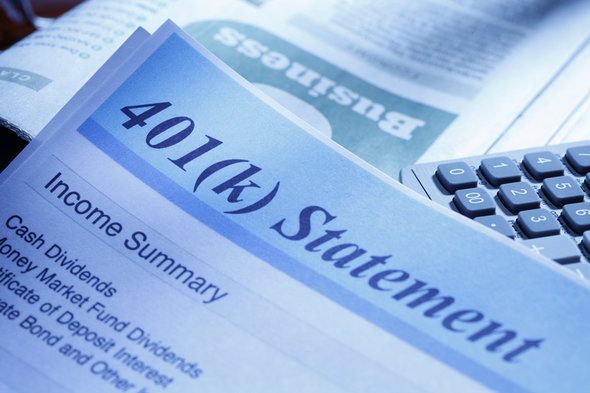Determining how much you should contribute to your 401(k) depends on factors like employer matching, tax benefits and personal financial goals. Some aim to contribute enough to maximize their employer match, while others strive to reach the annual IRS limit. A common recommendation is to allocate at least 10% to 15% of your salary, but individual circumstances, such as debt obligations and living expenses, play a role in setting the right percentage. Adjusting contributions over time can help balance retirement savings with short-term financial needs.
Do you have retirement planning questions or need help saving? Speak with a financial advisor who serves your area today.
How Much Should I Contribute to My 401(k)?
A 401(k) is a retirement savings plan offered by many for-profit companies. These accounts allow you to decrease your current taxable income because you fund them with pre-tax dollars. Then, in retirement, you pay taxes on your withdrawals under the assumption that your tax rates will be lower as a retiree than they are now.
However, it’s not a savings account, so your money doesn’t just sit and grow automatically. Your employer chooses some investment options, and then it is typically up to you to create a portfolio of market-reliant investments. In other words, like any other investment, 401(k)s do have plenty of risk associated with them.
Saving between 10% and 15% of your gross salary toward retirement is a general rule of thumb to follow, but everyone’s situation is different. These savings could come in the form of a 401(k) or in another kind of account, like a Roth IRA or even a traditional savings account.
Again, these percentages are just a general rule. The actual amount you should save depends on your situation. For example, if you are 50 years old and don’t have any retirement savings, you may need to save more than 20% of your gross annual salary to feel comfortable. If you’re 30 years old and already have $100,000 in retirement savings, you could probably decrease your contributions for a bit to pay off a mortgage or loan should you have one. It’s difficult to create a one-size-fits-all plan because everyone is in a different place with his or her finances.
Saving 10% to 20% of your salary every year might sound like a lot. Luckily, you don’t have to do it all at once. You can spread your contributions out throughout the year and you can contribute more or less some years. You also don’t have to save all that money through your 401(k). Let’s take a step back and talk about other factors you should consider when you think about how much to contribute to your 401(k).
401(k) Contribution Limits
Consistently contribution to your 401(k) can turn it into a powerful tool for long-term wealth. However, you can’t just contribute an unlimited amount to it each year.
For 2025, the most you can contribute is $23,500 (up from $23,000 in 2024). But if you’re 50 or older, the limit increases to $31,000 (up from $30,500 in 2024) due to the additional $7,500 catch-up contribution limit. Starting in 2025, if you are aged 60 to 63, you will be able to make an expanded catch-up contribution of $11,250 (bringing the total to $34,750).
Build Your Emergency Fund
You want to save as much as you can for retirement, but you shouldn’t put all of your savings toward retirement. You should always have enough cash reserves to cover necessary expenses like food and rent. It’s also a good idea to create an emergency fund.
An emergency fund will protect you from unexpected expenses or difficult financial situations. What would you do if you lost your job or didn’t have a regular salary for a month? What if a family member got sick and you had medical bills to pay? A strong emergency fund allows you to get through tough times. Withdrawing money from your retirement accounts should be an absolute last resort. Just as importantly, an emergency fund will ease your mind by providing a sense of security. It’s always nice to know that you have a backup plan in case something goes wrong.
Again, there is no perfect answer for how much you should have in an emergency fund. It depends on your situation. In general, though, you want enough to cover at least a few months of expenses. That may sound like a lot if currently have no emergency fund, but you can build your fund over time by adding a little each week or month.
Generating your quiz…
Contribute Enough for the Full Employer Match
You have enough saved up to cover your expenses. Your emergency fund is there in case you need it. Now you’re starting to think about 401(k) contributions. Where do you start?
The first thing you should figure out is if you have an employer matching program with your 401(k). With an employer match, your employer will match your 401(k) contributions up to a certain percentage of your gross salary. Say your employer offers 100% match on the first 5% you contribute. That means if you contribute 5% of your gross salary to your 401(k), your employer will contribute an amount equal to 5% of your gross salary. The total contribution to your 401(k) would then equal 10% of your gross salary.
An employer match allows you to increase your contribution, and you should always take advantage of matching programs. Unfortunately, many people pass up free money by not contributing up to their employer match.
Invest in IRAs and Roth IRAs

If you remember the rule of thumb from earlier, experts advise saving around 15% of your gross salary each year for retirement. You could put this all in your 401(k), but you should consider some other options once you cover your 401(k) match.
If you’re single and earn less than $165,000, you qualify for a Roth IRA in 2025. But if you’re married, file jointly and earn less than $246,000 in 2025 you also qualify for a Roth IRA. Those amounts are up from $161,000 and $240,000 in 2024.
This is a retirement savings vehicle that you can open at virtually any bank or financial institution. You fund these with after-tax dollars. So your contributions won’t reduce your taxable income. However, eligible withdrawals you make after turning 59 ½ are tax-free. It’s good to have a mix of taxable and non-taxable income in your retirement.
Roth IRAs are particularly useful for young people who are just starting their careers. Chances are that if you just graduated from college, you’re in a lower tax bracket than you will be in when you retire. Paying the income tax now instead of later can save you money, especially when you need it the most
Roth IRA and Roth 401(k) Contribution Limits
In 2025, you can contribute up to $7,000 to a Roth IRA. The $1,000 catch-up contribution for those who are at least 50 years old can raise that to $8,000. These are the same as was in place for 2024.
In addition, your employer may also offer a Roth 401(k), which takes after-tax money just like a Roth IRA. For 2025, the contribution limit is $23,500, the same as a traditional 401(k). The catch-up contribution limits are also the same at $7,500 for people age 50 or older and $11,250 for those 60 to 63 years old, starting in 2025. That makes the total 2025 contribution limit for those over 50 and between 60 and 63 $31,000 and $34,750, respectively.
You can also invest in a traditional IRA, which takes pre-tax dollars and lessens your taxable income just like a 401(k). Some people also have an IRA because when they left a previous employer, they moved their 401(k) funds into an IRA via an IRA rollover.
Max Out Your Retirement Accounts
Maxing out your retirement accounts can significantly increase long-term savings due to the power of tax advantages and compound growth. Contributing the maximum allowable amount to a 401(k) and a Roth IRA each year can help build wealth faster, especially when starting early.
If you contribute the maximum – $23,500 to a 401(k) and $7,000 to a Roth IRA – every year for 30 years, assuming a 7% annual return, your retirement savings could grow to approximately $3 million. If you contribute only half of those limits, you would end up with less than half that amount. Over time, the difference in contributions results in a significant gap in retirement wealth, showing how consistent savings and compounding work together.
Bottom Line

Saving 10% to 15% of your gross salary for retirement each year is just a general rule. Your goal should be to save as much for retirement as you can. Before anything else, you should ensure that you have enough savings to cover regular expenses and emergencies. If you have an employer match on your 401(k), you should contribute enough to cover the full match.
If you qualify for a Roth IRA, you should try to max it out. It’ll provide a source of nontaxable income in your retirement. Once you’ve done those things you should contribute as much to your 401(k) or IRA as you can. The most important thing is to contribute regularly – even if you can only save a little bit. It’s hard to prioritize your future over the things you want now, but you will thank yourself if you save while you’re young.
Tips for Contributing to Your 401(k)
- If you’re struggling to get started or stay on track with your retirement savings, consider working with a financial advisor. Finding a financial advisor doesn’t have to be hard. SmartAsset’s free tool matches you with vetted financial advisors who serve your area, and you can have a free introductory call with your advisor matches to decide which one you feel is right for you. If you’re ready to find an advisor who can help you achieve your financial goals, get started now.
- If you switch jobs, you can no longer contribute to a previous employer’s 401(k) plan. You don’t want to lose the hard work you did to save that money, so you should look to make a direct 401(k) rollover to your new employer’s plan.
- A traditional IRA and a 401(k) offer similar tax benefits. You might wonder whether one is a better option for you. Here’s an article to help you think about an IRA vs. a 401(k).
- You should always avoid early withdrawals from your 401(k). Not only will you have to pay the income tax, you’ll have to a pay 10% penalty. There are a couple of ways you could avoid that big penalty though. If you really think you need to withdraw money early, here’s more information on 401(k) withdrawals.
Photo credit: ©iStock.com/DNY59, ©iStock.com/FatCamera, ©iStock.com/SIphotography
